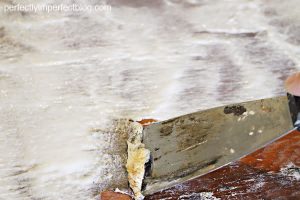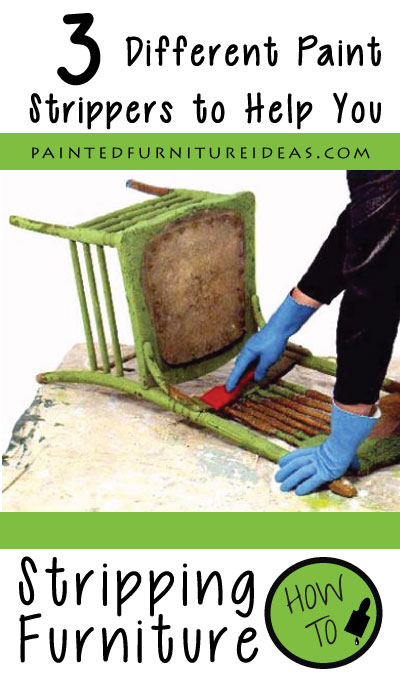Removing paint is the trick to revealing the original beauty of furniture. Perhaps you have a family heirloom that has been well used and over-painted, or maybe a garage sale find has great bones underneath cracked paint. There are so many paint strippers out on the market, to find the gem under the gunk, there’s a few tips you need to know.
After you’ve taken the obligatory “before” pictures, pull off the knobs and hinges to examine the piece. If there are any cracks, holes, or other major problems, fix them first. Most of the time this can be done with a little wood glue or paint filler. If you move to stripping the paint before fixing problems, you might make those small cracks much bigger.
All paint strippers will eat through almost any finish, the difference is how fast they work.
Types of Paint Strippers
- Fastest: The leader of the pack is Methylene Chloride
, dichloromethane, or DCM. These are all the same product designed to soften any paint almost instantly. It’s also the strongest, and requires careful use and a respirator for safety.
- Medium: Next in line is methyl-2-pyrrolidone, these still contain methylene chloride, but not as much. You may need a second coat when stripping furniture that’s caked under several layers of paint.
- Slowest: Water-based strippers are the most mild, but also the slowest. They can be used indoors without special ventilation, but can take as long as 24 hours to work and may raise the grain and loosen veneers. Citri-Strip is a good brand to use.

Now, you’re ready to strip the paint! Slow and steady wins the race with paint stripping. The best chemical stripping method is to do it by hand. You’ll need to protect yourself with adequate safety gear including googles, gloves, apron, and perhaps a respirator. If you have old paint brushes lying around, cut them down to a stump and use to lather on a good chemical stripping product. Then good old fashioned steel wool and metal scrapers work great to scrub off the sludge. Small scrub brushes can help get paint out of all the nooks and crannies. Methylene chloride can be dangerous to work with, so be sure to use it outside in an area covered by several layers of newspaper.
Once the paint is off, rinse off any remaining stripper with denatured alcohol and allow to dry completely before giving the piece a final sanding to reveal the inner beauty that you knew was there all along.
![]()





